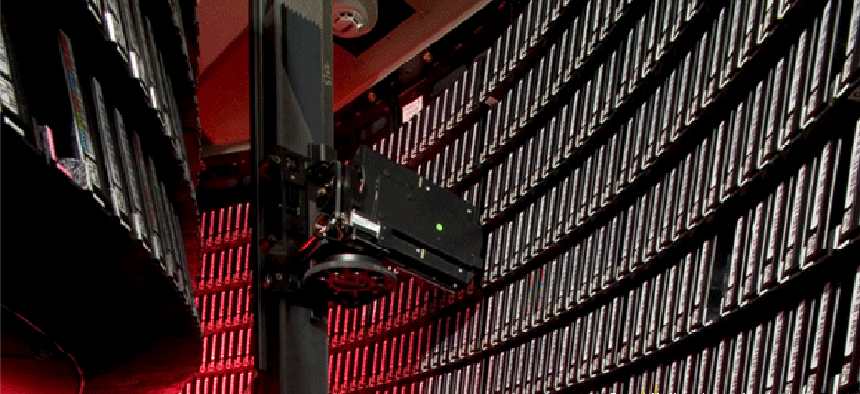Tape storage systems are down, but not out


Connecting state and local government leaders
Agencies are moving more of their data to the cloud and considering disk systems for local storage, but tape isn't quite dead yet.
Unlike some other aging technology, tape drive storage seems to make a comeback every few years. Network World just ran a feature that shows areas where tape drives can still be the centerpiece of storage solutions. The problem is that they had to follow a film crew to Africa to do it. The filmmakers used tape to backup whatever they shot that day, and to mail it back to their studio.
In government, tape has been on the way out for several years as agencies slowly weed it out of their domains, even in out-of-the-way places. GCN recently reported on Alaska's new failsafe storage system, whose primary goal is getting away from tape drives. Across the country in Dedham, Mass., a close call with a tornado prompted the town’s technology director to give up tape and move storage to the cloud.
Personally, I’m not as much against tape as other dying technology, like CRT monitors. Tape backup systems did the job well for years. After the attacks on Sept. 11, 2001, we gave shelter in the GCN lab to a friend who had been chased out of his government office by an evacuation order. He showed up at our doorstep with a sack of backup tapes, which could have been used to restore the office network should the building have taken a hit, which thankfully it didn’t.
But there are many problems with tape, which newer technologies have started to overcome. Tape systems could be fairly unreliable. We used to have a seven-tape rotating system in the lab for data backup, with one tape being automatically used each day of the week. Every six months or so, we would lose a day’s worth of data to tape errors. Giant robotic systems and tape libraries can help because the presence of so many tapes means less writing to individual drives, and failures can be compensated for by simply having the robot route around devices in trouble. But those systems are expensive, which defeats one of the main advantages of tape — the dirt cheap price. But almost nothing has been invented that can actually speed up tape drives, which means that sometimes long wait times to retrieve data are unavoidable using that medium.
Last year, companies like IBM were pushing the idea of replacing tape inside government with flash memory, something I thought would be a good idea if the cost of the new drives could be reduced.
There are even hybrid systems where quick flash memory is used for frequently used data and tape is used for long-term, less frequently needed files. In May 2012, the National Center for Supercomputing Applications announced plans for a storage infrastructure that will include 380 petabytes of magnetic tape to support its Blue Waters supercomputer.
Of course, the whole thing could be a moot point as more and more agencies move to the cloud. Agencies paying Amazon to keep their files might not care what medium the third-party company uses for storage.
Still, not all data can be trusted to outside entities, and storage is always going to be a local problem to some extent. Agencies that keep massive amounts of data could keep tape around as an inexpensive solution for long-term storage. And sometimes, even a small tape system could come in handy.
GCN last year reported on a case of the Drug Enforcement Agency, which had to drop the charges against a suspected drug dealer because the evidence file took up too much storage space. In that case, a cheap and inexpensive tape based storage solution would have been an easy fix, and you would not have needed to travel to Africa to find it.




